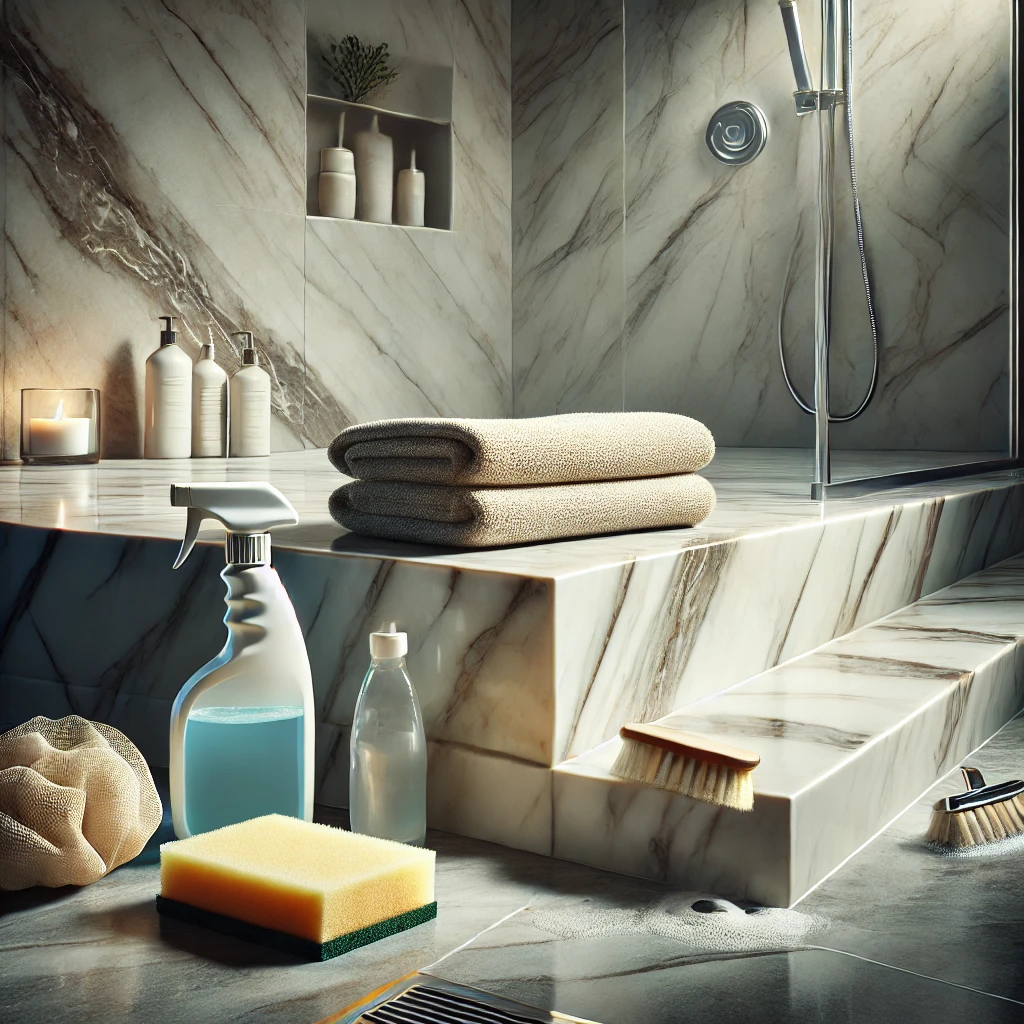
Selecting the Perfect Marble for Your Shower Threshold
Choosing the right type of marble for your shower threshold is a crucial step in ensuring that the final result meets both your aesthetic and functional goals. In this section, we’ll guide you through the process of selecting the ideal marble for your custom threshold.
First, it’s important to understand the various factors that influence the suitability of different types of marble. These factors include color, veining patterns, porosity, and durability. For example, while white Carrara marble is known for its soft, subtle veining and classic appeal, it may not be the best option for high-moisture areas due to its relative porosity compared to other types of marble. On the other hand, more robust options like Calacatta or Statuario marble offer bold veining and higher resistance to water and wear, making them ideal for shower thresholds.
We’ll explore the most popular marble varieties used in shower thresholds, including Carrara, Calacatta, Statuario, Nero Marquina, Emperador, and Crema Marfil. Each of these marble types brings its own unique beauty and characteristics to a bathroom. For instance, Calacatta marble is celebrated for its dramatic, bold veining, which creates a striking visual impact, while Nero Marquina, with its deep black background and contrasting white veins, adds a luxurious and contemporary touch to any bathroom.
In addition to discussing the aesthetic qualities of different marbles, we’ll also consider the practical aspects, such as how well the marble type you choose will withstand the constant exposure to water and humidity in a shower environment. Understanding these factors will help you make an informed decision that ensures your custom marble shower threshold is both beautiful and durable.
Furthermore, we’ll offer tips on how to match your marble shower threshold with the surrounding tiles and bathroom fixtures. For instance, if your bathroom features dark stone or tile flooring, a lighter marble threshold can create a stunning contrast, drawing attention to the shower entrance. Conversely, if your bathroom has light-colored tiles, a darker marble threshold can add depth and visual interest. By carefully selecting the right marble, you can create a cohesive and elegant bathroom design that enhances the overall appeal of your space.
The Installation Process: What to Expect
Installing a marble shower threshold is a meticulous process that requires precision and expertise to achieve a flawless result. This section will provide a detailed overview of what to expect during the installation of a custom marble shower threshold.
We’ll begin by discussing the importance of professional installation. While it may be tempting to undertake the installation yourself, marble is a delicate material that can be challenging to work with, particularly in a wet environment like a shower. Professional installers have the tools, experience, and knowledge necessary to handle marble with care, ensuring that the threshold is cut, positioned, and secured correctly. This is especially important for custom thresholds, where even the slightest error in measurement or installation can lead to water leakage or an unsatisfactory appearance.
The installation process typically starts with precise measurement of the shower entrance or curb where the threshold will be placed. Accurate measurements are essential to ensure that the custom threshold fits perfectly. Next, the marble threshold is cut to size using specialized tools that can handle the hardness of marble without causing damage.
Once the threshold is cut to the correct size, the installation team will prepare the area by ensuring that the subfloor or curb is level and free of any debris that could interfere with the placement of the threshold. The threshold is then carefully positioned in place, with attention to ensuring that it is level and properly aligned with the surrounding tiles.
Sealing the marble is another critical step in the installation process. Since marble is a porous material, sealing it helps protect it from moisture, staining, and potential damage caused by water exposure. The installer will apply a high-quality sealant to the threshold, allowing it to penetrate the stone and form a protective barrier. This step not only enhances the durability of the threshold but also helps maintain its beauty over time.
We’ll also address potential challenges that can arise during the installation process, such as dealing with uneven surfaces, aligning the threshold with surrounding tiles, or ensuring proper drainage. Professional installers are equipped to manage these challenges, ensuring that the final outcome is a beautifully installed threshold that enhances both the functionality and aesthetic appeal of your bathroom.

Caring for and Maintaining Your Marble Shower Threshold
Marble is a natural stone that requires proper care to maintain its beauty and longevity, especially in a shower environment. In this final section, we’ll provide comprehensive advice on how to care for your custom marble shower threshold, ensuring that it remains as stunning as the day it was installed.
Regular cleaning is essential to keep your marble shower threshold looking its best. We’ll cover best practices for removing soap scum, mineral deposits, and other residues that can accumulate on the surface over time. Using a soft, damp cloth and a pH-neutral cleaner specifically designed for marble is recommended to avoid damaging the stone’s surface.
In addition to routine cleaning, we’ll discuss deeper cleaning techniques to remove stubborn stains and restore the marble’s natural luster. While marble is relatively resistant to staining, certain substances commonly found in bathrooms, such as soap, shampoo, and hard water deposits, can cause discoloration if not cleaned regularly. We’ll provide tips on how to tackle these issues using gentle, non-abrasive methods that won’t harm the marble.
Sealing your marble shower threshold is another important aspect of maintenance. As mentioned earlier, marble is a porous material, and sealing it helps protect it from moisture, staining, and etching. We’ll discuss how often you should seal your marble threshold, depending on its location and usage, as well as the types of sealants that are most effective in a wet environment.
We’ll also cover what cleaning products to avoid, as some common household cleaners can damage marble. For example, acidic cleaners, bleach, and vinegar should never be used on marble, as they can cause etching and dull the stone’s finish. Instead, we’ll recommend safe, marble-friendly products that will help preserve the stone’s natural beauty.
Finally, we’ll offer advice on how to address common issues like minor scratches and dullness. While marble is a durable material, it is not immune to wear and tear. If your marble shower threshold develops minor scratches or loses its shine over time, we’ll provide tips on how to restore its appearance, including polishing and buffing techniques.
